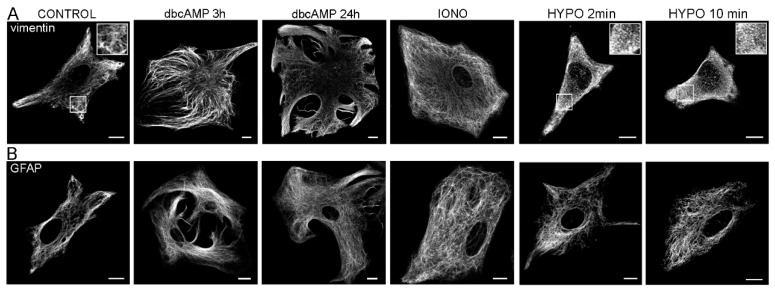Figure 1.
Cellular distribution of GFAP and vimentin cytoskeleton in primary rat astrocytes in normal conditions and in conditions that are typically present in pathological states. Astrocytes treated with dbcAMP (N 6,2′-O -dibutyryladenosine 3′:5′ cyclic monophosphate), a membrane-permeable analogue of cAMP, mimic general reactive gliosis. Hypotonic stimulation, on the other hand, leads readily to astrocyte swelling, which is a part of the cytotoxic or cellular edema response. Changes in intracellular arrangement of vimentin (A) and GFAP (B) filaments are evident in reactive astrocytes (after cAMP stimulation) and after hypotonic stimulation (HYPO), as revealed by immunolabeling. Note also the stellated morphology of astrocytes after the increase in cAMP. Hypotonic treatment triggered depolymerization of vimentin filaments—selected areas (white squares) are magnified (2×)—in insets Bars: 10 µm. Modified with permission from [84] (Regulation of AQP4 Surface Expression via Vesicle Mobility in Astrocytes, GLIA, Copyright© 2013 Wiley Periodicals, Inc., (Hoboken, NJ, USA)).

